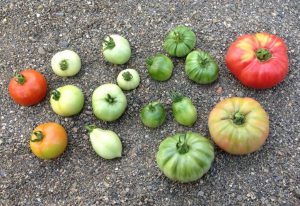It is coordinated by the researcher Antonio Granell, from the Plant Molecular and Cellular Biology Institute, and has a total budget of 8.07 million euros.
The project will collect and centralize genetic information on tomato varieties to make it available to researchers, producers and companies.
A biotechnology project led by researchers from the Higher Council for Scientific Research (CSIC) seeks to develop tomato varieties with higher quality, better flavor and greater resistance to emerging diseases and climate change.
This is the European project called Harnesstom, which is coordinated by the CSIC researcher Antonio Granell, from the Institute of Molecular and Cellular Biology of Plants (IBMCP), a mixed center of the CSIC and the Polytechnic University of Valencia. It seeks to collect and centralize genetic information on tomato varieties to make it available. The project has a budget of 8.07 million euros, of which 7.04 will be financed by the Framework Program for Research and Innovation of the European Union (Horizon 2020) and the rest will be covered by the participating companies and the Government of Taiwan.
The Harnesstom project (Harnessing the value of tomato genetic resources for now and the future) will be developed over the next four years. It will do so with the participation of institutions from seven countries, from small and medium-sized enterprises, technology companies, farming companies to NGOs, farmers’ associations and academic institutions. The project brings together all the agents so that the results of the laboratories are transferred to the market.
“This is an initiative of great importance for a crop such as tomato. First, because it will make it possible to offer the market solutions so that this crop resists some of the viruses that threaten it, such as the tomato rugose virus (ToBRFV), as well as the challenges of climate change. And second, because the project brings together all the agents so that the results of the laboratories are transferred to the market: from researchers, to producer associations, companies, NGOs, etc. All with one goal: that the tomato that reaches our table is better, in every way”, highlights Antonio Granell, expert in tomato research.
Four improvement programs
The tomato is a vegetable with reduced genetic diversity and, therefore, very vulnerable to emerging diseases and climate change. “Fortunately, the tomato is rich in genetic resources and sufficient information is available to overcome these difficulties. The Harnesstom project tries to demonstrate that the increase in the use of genetic resources is key to food security and to achieving a higher quality final product”, Granell points out. In this way, and taking advantage of the great effort made in several EU-funded projects to connect phenotypes/genotypes, Harnesstom will collect, centralize and normalize this large amount of information so that it can be used by different types of users in a simple way. .
Likewise, the project will develop four pre-production programs. The first of them will try to introduce resistance against the main emerging diseases. The second will seek the best adaptation of tomato to climate change. The third pre-production program will be dedicated to quality improvement. And the fourth will seek to increase the resilience of the traditional European tomato through participatory breeding.
The University Institute for the Conservation and Improvement of Valencian Agrodiversity (COMAV), of the UPV, also participates in the project, which has a germplasm bank that contains one of the largest collections of genetic material of tomato and wild relatives, which will be key to achieve varieties more resistant to emerging diseases. In addition, the project aims to engage farmers, consumers, trend-setting chefs and universities in activities for the design of innovative strategies that will yield locally adapted cultivation materials.
A consortium of 22 institutions
In addition to the CSIC and the UPV, the project has five partners in Spain: the Valencian Institute of Agricultural Research (IVIA), the Extremadura National Agrifood Technological Center (CTAEX), the Cajamar Foundation, the Association of Producers and Marketers of Tomata de Penjar d’Alcala de Xivert and Enza Zaden Research Center. The Harnesstom consortium is completed by fifteen other entities from Bulgaria, France, Italy, Israel, the Netherlands and Taiwan.
CSIC Communication Valencian Community




